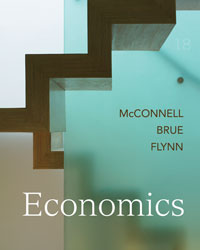1 <a onClick="window.open('/olcweb/cgi/pluginpop.cgi?it=jpg::::/sites/dl/free/0025694212/627572/q1.jpg','popWin', 'width=NaN,height=NaN,resizable,scrollbars');" href="#"><img valign="absmiddle" height="16" width="16" border="0" src="/olcweb/styles/shared/linkicons/image.gif"> (16.0K)</a> A) land in figure (a) is most productive B) land in figure (b) is most productive C) land in figure (c) is most productive D) we cannot compare the productivity of the three grades of land 2 A) increase the supply of loanable funds and decrease the equilibrium interest rate B) decrease the supply of loanable funds and increase the equilibrium interest rate C) increase the demand for loanable funds and increase the equilibrium interest rate D) decrease the demand for loanable funds and decrease the equilibrium interest rate 3 A) is 4% B) is 7% C) is 10% D) cannot be determined from the information given 4 A) a decrease in bank lending will decrease the interest rate B) an increase in saving will increase the interest rate C) an increase in the productivity of business investments will decrease the interest rate D) an increase in government borrowing will increase the interest rate 5 A) do not lead to a reallocation of the resource B) are proportional to income across all income classes C) lead to more rapid economic growth D) can increase productive efficiency by reducing the cost of a key input 6 A) investment will be profitable B) investment will be unprofitable C) real rate of interest is 3% D) real rate of interest is 7% 7 <a onClick="window.open('/olcweb/cgi/pluginpop.cgi?it=jpg::::/sites/dl/free/0025694212/627572/q7.jpg','popWin', 'width=NaN,height=NaN,resizable,scrollbars');" href="#"><img valign="absmiddle" height="16" width="16" border="0" src="/olcweb/styles/shared/linkicons/image.gif"> (11.0K)</a> A) can use its monopoly power to earn an economic profit B) will be unable to earn economic profits at any possible price C) is earning a normal profit D) is earning a normal profit but not an economic profit 8 A) less than 3% B) less than 5% C) less than 20% D) at least 10% 9 uninsurable risk an entrepreneur may have to bear?A) Loss of profit due to employee theft and shoplifting B) Loss of productive work time due to employee injury on the job C) Loss of profit due to higher state and local taxes D) Loss of a factory due to fire 10 A) $2010 B) $2200 C) $2205 D) $2222














